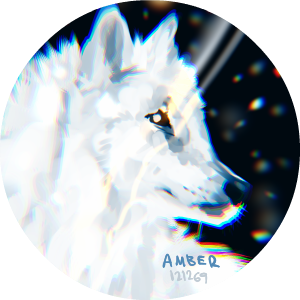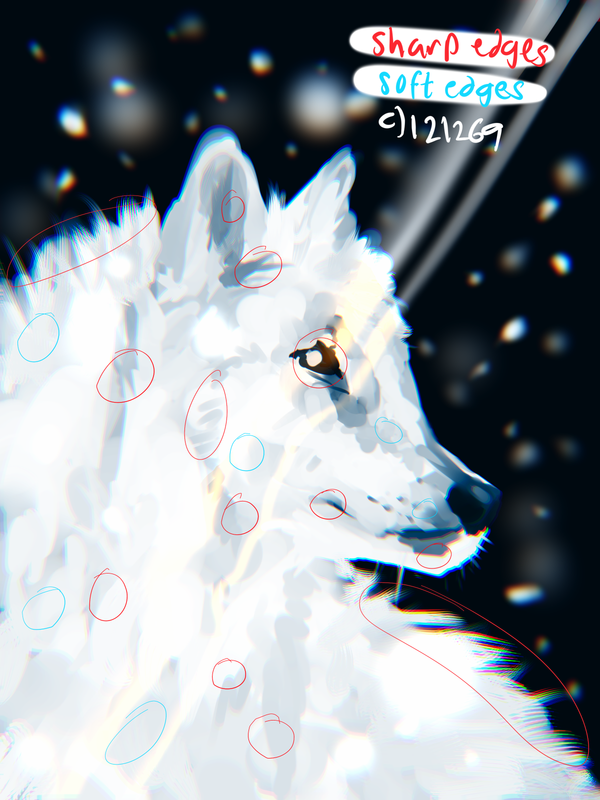| |

Neutral
|
Edge contrast is crucial for realistic-type art. Some edges are hard, and some edges are soft, and you'll need both to create something more realistic. Here, I've circled harder edges in red and softer edges in blue: What I personally do is go in with a hard brush and blend it out until there is a softer edge. A good challenge, I think, is for every brush stroke you make, have a hard edge and a soft edge! It sounds fun to me at least lol Fur practically depends on a contrast of hard and sharp edges, I've noticed. Try to pick out the hard and soft edges in other pieces of realistic artwork and where! If you know the placement, you know where to start/work on! This is what I have noticed in more realistic works, but I'm sure this applies to other styles as well as art is made with contrast! |
|
|
| |

Neutral
|
look at a picture and find sizes based on itself. for example, a horse's eye and nostril are roughly the same size. a wolf's eyes sit below where its ears end. try looking at it like this instead of being like "a horse's ears are 'this' long".
use anything to check your proportions. if you are referencing a picture and you're trying to draw the grape, look for something else in the reference picture about the same size as the grape and use that as guidance to get your proportions all right.
whatever is in your art is always relative to what is around it. EVERYTHING! this doesn't just include anatomy, but color as well. but I'll cover that later too (;
I'll have visual additions later too lol. I say this a lot here Edited at July 27, 2018 12:58 AM by a m b e r |
|
|
| |

Neutral
|
This guide is over 2 years old and I still find it super helpful lmao |
|
|
| |

Neutral
|
Kodoggy said:
This guide is over 2 years old and I still find it super helpful lmao
omg I'm so happy to hear that!! I will try to edit this thread so that all of the pictures show properly |
|
|









